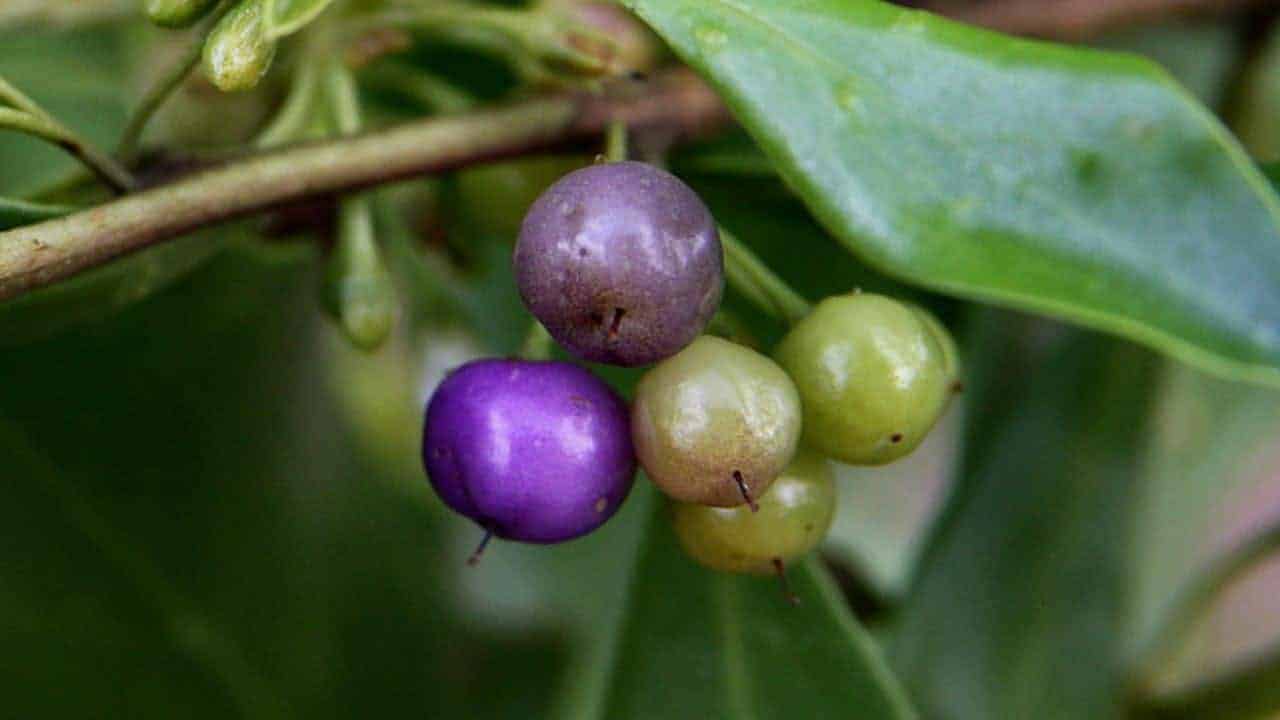Boobialla
Myoporum insulare ‘Prostrate’
Boobialla (also known as Native Juniper or Coastal Boobialla) is a native, salt-tolerant fruiting, groundcover. The name “bubiala” is believed to have originated from an Aboriginal Tasmanian language, and used to describe a different species altogether. Today, the term is commonly used for several species in the Myoporum genus. You can find this species of Boobialla growing wild on dunes, coastal cliffs and mangrove fringes across WA, NSW, Victoria, SA and Tasmania.
As Summer ends, this species produces smooth, round, purple fruits up to half a cm in diameter. They’re great for jams, jellies and preserves, but with an astringent sweetness, eating berries fresh off the branch might not be everyone’s cup of tea. Aromatic, juniper-like qualities makes Boobialla an exciting local botanical for essential oils and gin.
This species produces small white flowers as the weather heats up (in warmer areas of Australia, it’s not unusual to experience a long flowering season), with fruit following shortly after. To harvest, simply pluck berries once their colour deepens. We’d caution against foraging for these fruits, as unlicensed picking of native plants is unsustainable and illegal — what’s more, other members of the Myoporum genus are known to contain toxins, and can be harmful in large quantities.
Boobialla is hardy and can adapt to many climate and soil conditions, though it does best in an easily draining, sandy soil in full sun. Though it may lose its luster (and drop its leaves) when exposed to frost, it’s been known to recover quickly in the Spring, after pruning.
This fast grower bears smooth, green, spatula-shaped leaves with toothed edges near the tip. Even when creeping, it takes on a bushy appearance, making it perfect as a rockery plant, for filling gaps or for smothering out weeds. This species also makes a hardy native edible verge plant.
How often should I water my Boobialla?
Enough to keep the soil moist, but not waterlogged. If in doubt, err on the side of dryness, as this coastal species can tolerate a little drought.
Why are my Boobialla berries full of holes and pock marks?
In the wild, Boobialla isn’t just bush tucker for humans. You may be sharing your harvest with a variety of fruit-eating birds and insects.
When is the best time to prune a Boobialla shrub?
Prune year-round as desired — this will not affect flowering or fruiting of the Boobialla.

Suitable for full-sun

Suitable for part-shade

Suitable for pots

Dimensions:
Height 30-50cm
Width 1-2m

Tolerates drought

Tolerates sandy soils

Tolerates salt

Fruits from:
Year 1 onwards

Bird attracting

Attracts bees & insects

Attracts lizards

Suitable for gaps

